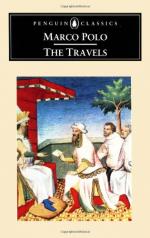NOTE 6.—The Patra, or alms-pot, was the most valued legacy of Buddha. It had served the three previous Buddhas of this world-period, and was destined to serve the future one, Maitreya. The Great Asoka sent it to Ceylon. Thence it was carried off by a Tamul chief in the 1st century, A.D., but brought back we know not how, and is still shown in the Malagawa Vihara at Kandy. As usual in such cases, there were rival reliques, for Fa-hian found the alms-pot preserved at Peshawar. Hiuen Tsang says in his time it was no longer there, but in Persia. And indeed the Patra from Peshawar, according to a remarkable note by Sir Henry Rawlinson, is still preserved at Kandahar, under the name of Kashkul (or the Begging-pot), and retains among the Mussulman Dervishes the sanctity and miraculous repute which it bore among the Buddhist Bhikshus. Sir Henry conjectures that the deportation of this vessel, the palladium of the true Gandhara (Peshawar), was accompanied by a popular emigration, and thus accounts for the transfer of that name also to the chief city of Arachosia. (Koeppen, I. 526; Fah-hian, p. 36; H. Tsang, II. 106; J.R.A.S. XI. 127.)
Sir E. Tennent, through Mr. Wylie (to whom this book owes so much), obtained the following curious Chinese extract referring to Ceylon (written 1350): “In front of the image of Buddha there is a sacred bowl, which is neither made of jade nor copper, nor iron; it is of a purple colour, and glossy, and when struck it sounds like glass. At the commencement of the Yuen Dynasty (i.e. under Kublai) three separate envoys were sent to obtain it.” Sanang Setzen also corroborates Marco’s statement: “Thus did the Khaghan (Kublai) cause the sun of religion to rise over the dark land of the Mongols; he also procured from India images and reliques of Buddha; among others the Patra of Buddha, which was presented to him by the four kings (of the cardinal points), and also the chandana chu” (a miraculous sandal-wood image). (Tennent, I. 622; Schmidt, p. 119.)
The text also says that several teeth of Buddha were preserved in Ceylon, and that the Kaan’s embassy obtained two molars. Doubtless the envoys were imposed on; no solitary case in the amazing history of that relique, for the Dalada, or tooth relique, seems in all historic times to have been unique. This, “the left canine tooth” of the Buddha, is related to have been preserved for 800 years at Dantapura ("Odontopolis"), in Kalinga, generally supposed to be the modern Puri or Jagannath. Here the Brahmans once captured it and carried it off to Palibothra, where they tried in vain to destroy it. Its miraculous resistance converted the king, who sent it back to Kalinga. About A.D. 311 the daughter of King Guhasiva fled with it to Ceylon. In the beginning of the 14th century it was captured by the Tamuls and carried to the Pandya country on




